As the calendar turned to 2019, it was apparent that the yellow cab industry in New York City was turning over a new leaf as well. The city council passed a cap on the number of for hire vehicles over the previous summer, temporarily freezing them for a year. Taxi medallion prices, which had been in a precipitous decline for a number of years, were finally bottoming out – although at values as much as 80% off of their peak in 2014. Even the ubiquitous Ford Crown Victoria was nearly gone from the cityscape, as the Taxi of Tomorrow was finally becoming the dominant model of cab that one could hail. For many drivers however, the biggest change that they were up against was one that nobody saw coming, as TLC Commissioner Meera Joshi announced in early January that she would be stepping down sometime in March; claiming that it was a “mutual decision”. Manhattan Borough President Gale Brewer even went as far to say that she didn’t know “…if there’s ever been a better commissioner at the TLC or anywhere else” and thought that de Blasio was making a “big mistake” in letting Joshi step down, while many of the drivers under her watch were finally glad to see her go; even if all the problems that they were confronted with could not be directly blamed on her.
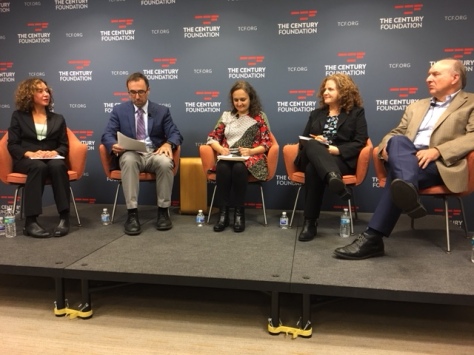
TLC Commissioner Meera Joshi (far left)
Regardless of how people felt about yet another sudden change in the de Blasio administration, everyone felt that her time as Commissioner was quite tumultuous. Having been appointed by the current New York City Mayor early in his first term , Joshi previously served as Deputy Commissioner for Legal Affairs and General Counsel for the TLC in the latter days of the Bloomberg Administration. During her nearly 5-year tenure as Commissioner, the industry was rocked to it’s core as the meteoric rise of services like Uber and Lyft threatened to put the yellows out of business once and for all. Joshi, in recent speeches, stated that her job was a tough one to navigate because of the challenges that these companies brought to the table, but that the rollout of wheelchair accessible taxis, utilization of data from TLC passengers, and changes in the licensing of drivers were bringing the cabs on New York’s streets into the 21st century.
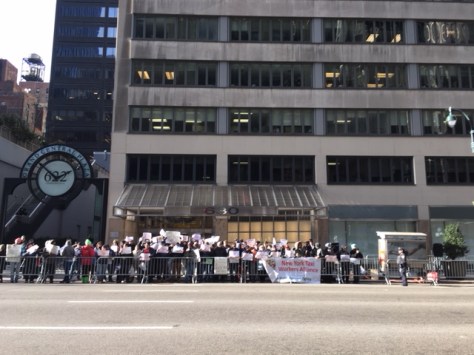
Congestion pricing rally – 3 Ave
What may have finally been the impetus that let to her resignation was one of the sticking points that reared it’s head again in recent months, namely the proposed congestion fee that would have been placed on all green and yellow taxis, as well as FHV’s, entering Manhattan south of 60 St. 10 years ago, then-mayor Michael Bloomberg proposed something similar for all vehicles entering that zone of Manhattan but that was shot down the New York State Legislature. The current plan would not have placed the fee on private vehicles, but instead on those taking people around the most densely populated part of the city, with the irony that many of those passengers having elected to leave their cars home in the first place. Joshi was stated on the record saying that the current plan would be devastating to drivers that were still struggling to make ends meet, while the mayor was in favor of the fee as a means to ease gridlock in New York.
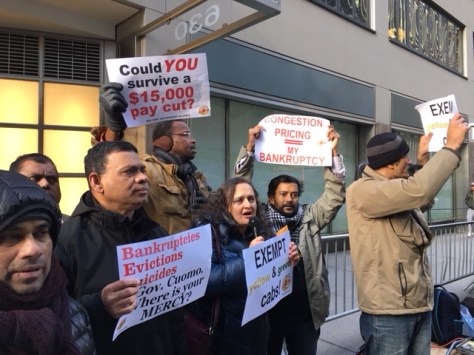
New York Taxi Workers Alliance Executive Director Bhairavi Desai
Lost in the middle of all of this were the challenges facing the Metropolitan Transportation Authority. With bus ridership down and subway ridership leveling off after years of steady growth, many in the Big Apple were turning to other means of transportation to get around town. While the recent additions of NYC Ferry and Citi Bike were filling in some of the mobility gaps for New Yorkers, others were turning to FHV’s and rideshare services to get around parts of the city that were transit deserts. In addition, the MTA was desperate for additional revenue to handle maintenance and capital improvements that were desperately needed to keep the system in good repair and ensure that gains in additional ridership could be handled. It was bad enough that every Uber and Lyft fare wasn’t contributing 50 cents for the MTA surcharge (unlike the taxis) but that their stratospheric growth was siphoning ridership from trains and keeping the buses from sticking to their schedules.
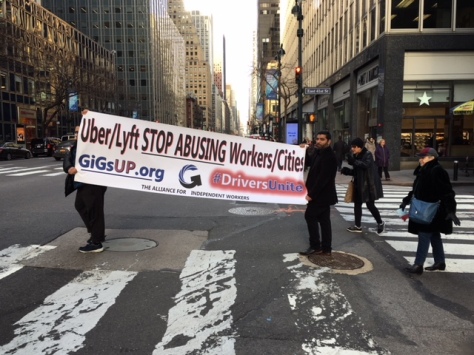
FHV Drivers – 3 Ave
All of this came to a head last month as the proposed congestion fee was weeks away from taking effect right after the first of the new year. A rally in front of New York Governor Cuomo’s Midtown office on 3 Ave drew drivers who were tired of the proposals to tax and surcharge their fares even further. One driver had even left the industry after being in for 40 years, citing the inability to make a living under the current conditions. As sparse as the turnout was, it had a hand in temporarily stopping the surcharge’s implementation with a Judge blocking it’s implementation via a restraining order. As of this writing, it was unsure if or when it would ever become law, as officials were considering taking a closer look at the proposal and who would pay under an revised plan.
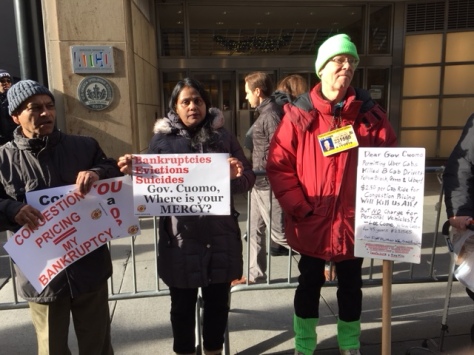
Drivers – 3 Ave
As lawmakers squabbled with more meetings, rallies, and protests against the surcharges yet to come, the new year was not much different than those of the recent past for those who worked behind the wheel. Further redesign of accident-prone intersections, continued additions of bicycle lanes and pedestrian plazas, and the restriping and redesign of 14 St for buses in anticipation of the now-cancelled L train shutdown in April were further proof that both the Mayor’s Vision Zero initiative and emphasis on dedicated right-of-ways were working and would be further expanded in the coming years. A record-low number of pedestrian fatalities, along with record-low speeds recorded in Midtown, combined to only exacerbate the reality that drivers of all types were facing in New York – namely that it was becoming even more difficult to get around, let alone earn a living, on the streets of the greatest city in the world. In spite of that, some people, including an economist and a former city transportation commissioner were among the many that were seeing the problem for what it was, and putting the blame on the right sources. For all of the mistakes made in the past, there were hints of positive changes in the industry for the first time in quite a few years.
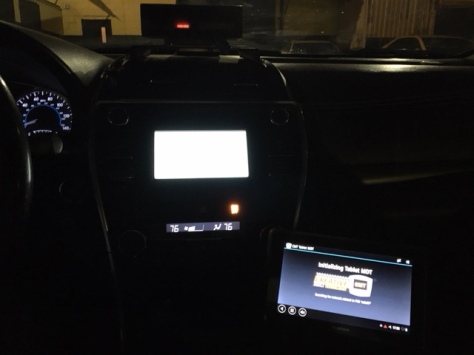
Upgraded Passenger Information Monitor – Greenpoint
A tiny evidence of that showed up in the cab of yours truly last week. For the first time, one of thew new Passenger Information Monitors awaited me as I got inside of my Camry for a weekend night’s shift. Thin, sleek, and user-friendly, it was a vast improvement of the duller and less-informative ones that had graced taxi interiors over the last 5 or so years. Rollouts in anything government-operated tend to be slow and sometimes clumsy but in this instance, it was smooth as I quickly adjusted to the new interface once I was out on the streets and taking fares. If there was a possibility that this minute aspect of my cabdriving experience could be improved upon, then maybe there was some hope that everything else work-related would change for the better as well. As usual, everything had to just be taken one fare a time…
